arielle's post
The current food crisis in East Africa has left millions unemployed, homeless, starved, and dehydrated— the worst drought to hit East Africa in 60 years.[1] But what caused such a massive crisis, and who is paying the biggest price?
As fears about food security slowly move into focus in the international community, much of East Africa is being divvied up once again for its fertile land; even the head of the United Nations’ Food and Agriculture Organization, Jacques Diouf, is calling some projects “neocolonialist”.[2] The new phenomena of land grabs in East Africa by private investors and state-led initiatives begs immediate attention. Although there is a movement within the international political economy to support this trend, land grabs pose a real threat and has the potential to lead to grave human and environmental degradation. Land grabs compromise the autonomy of East Africans, especially women, to make a living and to provide food for themselves and their families.
Agribusiness has largely snubbed its’ nose to those at the very bottom of the food production chain. This is problematic for numerous reasons, mostly because it affects millions of people. In Kenya alone, 75% of the population lives in rural areas.[3] They are possibly subject to these land grabs and have little autonomy over the fate of their livelihoods that are already extremely sensitive to market fluctuations in the price of raw goods. This vulnerability is especially true for women, as 90% of rural women in Kenya work in the agricultural sector.[4] Kenya isn’t the only East African country where the overwhelming majority of rural women work in the agricultural field. It is estimated approximately 60-80% of all food grown in Africa is produced by women.[5] Land tenure deals have a direct effect on the lives of rural women by stripping them of their source of income, an incredibly harmful and dangerous fate for such a vulnerable population. This is because rural East African female farmers are born into overwhelmingly patriarchal societies that govern their labor, their access to land within the context of customary land rights, and are therefore further disadvantaged by liberalization and market-based reforms.
The nature of rural East African women working in the agricultural sector is severely limited by the constraints of their gender in a patriarchal society. There are wider customary laws and norms that women are always subjected to, such as issues of labour, health, and childcare. Stewart writes “…agricultural labour is guided by wider community norms which embody assumptions about gender roles.”[6] The value placed on women’s labour is significantly lower than their male counterparts, dictated by specific gendered work that is in the realm of their familial responsibilities. Though advocates for African women’s rights push for tighter labour laws and fair wages, author Ann Stewart explains: “Much of the agricultural work undertaken by women is ‘informal,’ unregulated by contracts of employment or labour laws because women often labour as family members, rather than owners on farms.”[7] This poses a roadblock for those women wishing to get fair compensation from land tenure deals. If women who farm don’t own their own labour or are severely underpaid, it is reasonable to conclude that if compensation was given to African residents, their husbands or fathers would be the one’s benefiting from it. This would further strengthen their financial control over their wives and daughters.
Liberalization schemes and market based reforms rarely benefit small famers, especially rural women. This is due to their inability to compete in such a cut-throat, tumultuous market. Author Ann Stewart explains that women are particularly hurt by liberalization, as it leads to a roll back of state services such as health care and education—issues that directly affect women.[8] She adds that liberalization schemes also lead to reduced tariffs, which lead to a smaller tax base, leaving governments with little spending money on social services.[9] With less money spent on social services, women have little option but to demand more from themselves and their female children. These issues are further exacerbated when one considers that “the risks within market-oriented strategies include economic marginalization and loss of land…”[10]Land tenure deals understandably place an incredible amount of stress on small farmers, however, in the world of privatization, new land market opportunities have tended to disadvantage women, as men find it easier to appeal to this new emphasis on investing.[11] With less money, less opportunity, and fewer social services, East African women have historically turned toward their extended family for support. But as more pressure is placed on the value of land, society grows more individualized, and the economy more privatized, notions of reciprocity and social safety nets of extended families are breaking down, further disadvantaging women.[12] Already in a vulnerable position, liberalization and privatization schemes place great stress on rural female farmers, as they simply have very few resources to support themselves and their children.
[1] Oxfam Canada. (2011, Fall). Oxfam responds to food crisis in East Africa. Oxfam Canada News,p.1,6.
[2] “Buying farmland abroad,” 2009, para. 26
[3] Stewart, 2010, p. 26
[4] Stewart, 2010, p. 32
[5] Englert & Daley, 2008
[6] Stewart, p. 31
[7] Stewart, p. 31
[8] Stewart, p. 32
[9] Stewart, p. 32
[10] Jacobs, p. 181
[11] Englert & Daley, 2008
[12] Englert & Daley, 2008
One of the reasons why land tenure deals pose a real threat to East Africans is that it removes them from their position as farmers in the agricultural production chain. In her book “The Challenge for Africa”, Kenyan activist and Member of Parliament Wangari Maathai writes:
“Our food might be produced in Kenya— either chickens or rice, as well as some greens— but the income received from it generally flows in one direction: out. Consequently, the money brought to rural areas through the sale of commodities such as cash crops is then siphoned back to the town where the consumer goods are transported from, and eventually repatriated to the countries that produce them.” [1]
Replaced by foreign farmers, land grabs force East Africans to be removed from the circle of economic activity, and all the money and food produced from the harvest goes directly to the purchasing countries without a penny distributed to small farmers.
The system of agricultural production already financially benefits those at the top rather than the bottom. Stewart explains: “By placing a premium on product development, value chain coordination and marketing, the system delivers the bulk of the gain to those involved in marketing and retailing, rather than growing crops.”[2] If international corporations like Monsanto are already making a large return on agricultural production, why must they insist on completely removing East Africans from the picture? The work of smallholder farmers isn’t lucrative—it is barely enough to survive on. To insist on their removal is undeniably inhumane. But as is the case with all other privatization schemes, to try and compete alongside these companies is more than financially difficult— it’s nearly impossible. Stewart states:
“Those who continue to pursue a livelihood in local markets must contend with the shadows of global markets, often finding themselves disadvantaged by changes associated with market development.”[3] Furthermore, due to their gender obligations and restrictions, female smallholder famers simply do not have the financial means to complete any post-harvest activities, such as large scale sorting, packaging and refrigeration.[4] Unable to compete in the shadow of global agribusiness giants, female farmers are left to find other methods of supporting themselves and their families.
Further exacerbating the many problems involved with land grabs is the issue of customary land ownership. In an effort by governments and the World Bank to formalize land ownership in much of East Africa, land titles were granted to those who registered their family’s land. Stewart accurately explains in detail the problematic tendencies with customary land ownership:
“Land is subject not only to the state law system but also to the customary land tenure systems of its [Kenya’s] 42 ethnic communities. Under the long-running Kenya formalization process, owners of customary titles are a free simple estate in the land, which can then be used and disposed of with minimal restrictions.”[5]
Unable to claim land as their own, governments are free to dispose communities that have been residing on pieces of land for hundreds of years without much trouble. Stewart writes, “customary rights of use are not recognized under the Registered Land Act, and so are not included as overriding interests.”[6] Land titles however are only granted to males, women’s access to land is only through marriage, divorce or inheritance. Unable to access markets, command their labour, or own land women are utterly left helpless—dependent on their husbands. In Kenya, it is estimated that women own 1% of registered private land, 5-6% hold land in joint names.[7] Women’s lack of opportunity to secure land rights under vastly patriarchal societies make them incredibly vulnerable to land grabs for several reasons; they are unable to receive compensation for land they predominately work on, and they have no negotiating power in community discussions regarding the customary uses of land, and their relocation.[8] Any attempts to remedy women’s lack of access to land has been futile since formal land titles are the only thing that are recognized. Women are thus ignored by any state lead initiatives[9] However, the situation isn’t entirely bleak, Englert and Daley explain: “…tenure reforms can be shaped and influenced by those who are concerned to protect women’s land rights.”[10] Because host East African countries are almost jumping at the opportunity to create land tenure deals, lobbyists, advocates, and even those countries buying or those investing in the land, have the unique opportunity to address gender inequality. Englert and Daley write, “it requires that gender be addressed seriously and integrally in all land policy, administration and reform initiatives.”[11] This could have a huge impact on rural East African female smallholder famers. Though exact figures aren’t yet available for the number of people displaced by land tenure deals, it can be assumed it is close to tens of thousands of people worldwide.
As the rate of successful land grabs continue to grow, it is morally imperative that a code of ethical conduct for foreign countries or businesses be adopted in order to eradicate further violation of human rights. This seems like a viable solution, as purchasing countries are the ones courting host countries, therefore host countries can set forth their agenda and expectations. As female rural smallholder farmers are already disadvantaged by liberalization schemes and patriarchal East African society, a preferential hire agreement of locals, particularly women who have previously worked their land would promote economic independence and provide new opportunities for them, such as learning new technological skills on new machinery. There would of course have to be a handsome compensation for those thrown off their land and environmental regulations clearly outlined and put into effect. Stewart writes: “The inclusion on a ‘social clause’ requiring all members [of the WTO] to enforce minimum labour standards was opposed by the majority of states, particularly in the developing world, and business lobbies.”[12] But because host countries are the ones being courted, they have the unique opportunity to conduct business that serves the purpose of ultimately bettering their citizens financially and socially. There is the potential for the fate of small-scale rural female farmers to continue making a living for themselves and their families on their farms, Jacobs states “…these examples indicate that positive outcomes for women within land reforms require democracy, transparency, and commitment to gender equity.”[13] It requires a commitment to change by policy makers, lobbyists, foreign countries and agribusinesses. To correct this prevailing bottom line ethos, they must favor a more just and principled dedication to sustaining the livelihoods of those, who thousands of kilometers away produce our dinner.


Works Cited
Englert, B., Daley, E. (Eds.). (2008). Women’s land rights and privatization in Eastern Africa. Woodbridge: James Currey.
Jacobs, S. (2010). Gender and Agrarian Reform. New York: Routledge
Maathai, W. (2009). The challenge for Africa. New York: Pantheon Books
Peterson, L. E., & Garland, R. (2010). Bilateral investment and land reform in Southern Africa. Retrieved from http://site.ebrary.com.ezproxy.library.dal.ca/lib/dal/docDetail.action?docID=10406256
Stewart, A. (2010). Engendering responsibility in global markets: valuing the women of Kenya’s agricultural sector. In A. Perry-Kassaris (Ed.), Law in pursuit of Development (pp. 26-40). New York: Routledge
Buying farmland abroad: Outsourcing’s third wave (2009, May 21) The Economist. Retrieved from http://economist.com/node/13692889
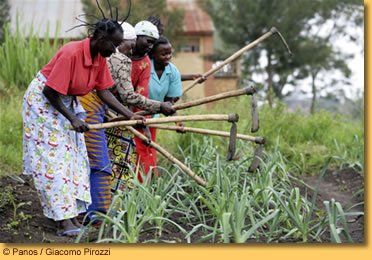

Did You Know?
Approximately 60-80% of all food grown in Africa is produced by women (Englert & Daley, 2008).
90% of rural women in Kenya work in the agricultural sector
(Stewart, 2010, p. 32).
In Kenya, it is estimated that women own 1% of registered private land, 5-6% hold land in joint names
(Stewart, 2010, p. 34)
Get Your Hands Off Our Land
By Arielle Cohen

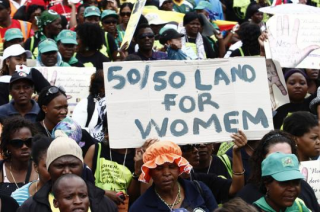

Alec's Post
The Long Road to Reform
By Alec Cumming
Arrival in Riyadh International Airport, and the first steps taken in Saudi Arabia, has a distinct feeling of significance for a western traveler. Immediately one is faced with the drastic cultural differences present, perhaps the most obvious of all can be found in the presence of Saudi women. Or rather, a lack of presence. There are no female airport workers, or indeed female workers of any sort to be seen upon arrival. The only women in sight are covered head to toe, wearing the niqab and the abaya to cover their entire bodies, and move like shadows behind their male escorts.
As a male traveller, I was spared the enforcement of a dress code, since there is none for men. But all women, no matter their descent or religious beliefs are required by law to wear the niqab, to cover the head and face, and abaya, to cover the body to the toes, at all times in public. Compliance with the law is ensured by the Mutaween, or religious police, who operate almost entirely unrestricted in their enforcement of the official policies of the Kingdom[i]. Punishment for any infractions are often swift and brutal in nature, with the accused having no access to a lawyer, and no semblance of a fair trial before being subjected to the will of the Mutaween, be it torture, flogging, maiming or beheading[ii]. Even small infractions of the dress code can result in public beatings or arrest, keeping women well in check.
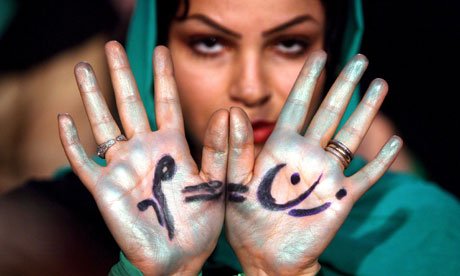
conditioned to expect male dominance and female subordination at all times, something which is not easily undone.
The level of institutional discrimination against women in Saudi Arabia is unrivaled. The laws in place are unmatched in their blatant disregard for the notion of female mobility, and the method of law enforcement is barbaric at best. However, the recent decision to allow women to vote and run in elections is an extremely promising development, and the actions of Saudi reforms like Rania Al-Baz and Nadia Bakhurji are creating important discussion around traditionally taboo topics. There are sign of change. The challenges however, years of male domination that have created an ingrained expectation of complete authority over women, will not be overcome quickly or easily. Indeed, a substantial shift in cultural values is required for women to approach any sort of equality, something that will likely be fraught with backlashes and violence, and thus cannot and should not be rushed. The events in the lead up to the 2015 elections will be extremely telling in terms of male acceptance of the idea female voters, and the results of the election, should it go smoothly, could be the start of a more profound and widespread change in the Saudi mindset.
[i] Lichter, I. (2009). Muslim women reformers. Amherst, NY: Prometheus Books.
[ii] Lichter, I. (2009). Muslim women reformers. Amherst, NY: Prometheus Books.
[iii] Doumato, E. A. (2003). Education in saudi arabia: Gender, jobs, and the price of religion. In E. Doumato & M. Posusney (Eds.), Women and Globalization in the Arab Middle East (pp. 239-257). Boulder, CO: Lynne Rienner Publishers.
[iv] Lichter, I. (2009). Muslim women reformers. Amherst, NY: Prometheus Books.
[v] Lichter, I. (2009). Muslim women reformers. Amherst, NY: Prometheus Books.
[vi] Lichter, I. (2009). Muslim women reformers. Amherst, NY: Prometheus Books.
[vii] Silvey, R. (2008). Transnational domestication. In C. Elliott (Ed.), Global Empowerment of Women (pp. 101-117). New York, NY: Routledge
[viii] Variety Arabia Staff. (2009, March 06). Saudis open screen door. Variety,
[ix] Buchanan, E. (2011, September 25). Women in saudi arabia to vote and run in elections. BBC
[x] Lichter, I. (2009). Muslim women reformers. Amherst, NY: Prometheus Books.
[xi] Lichter, I. (2009). Muslim women reformers. Amherst, NY: Prometheus Books.
[xii] Lichter, I. (2009). Muslim women reformers. Amherst, NY: Prometheus Books.
[xiii] Lichter, I. (2009). Muslim women reformers. Amherst, NY: Prometheus Books.
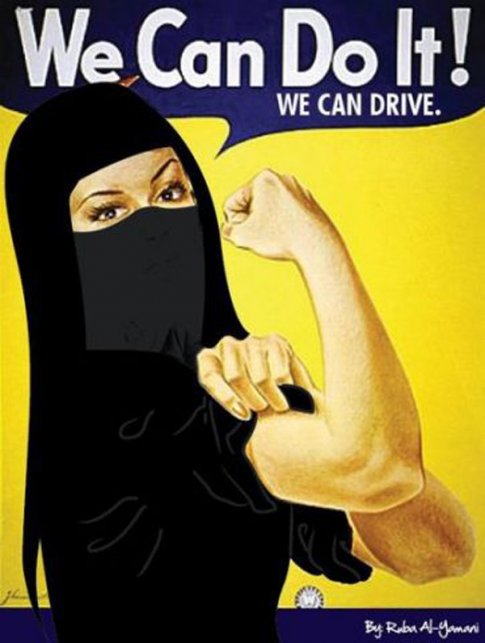

Saudi laws regarding women are entirely religious ones, overseen and interpreted by religious scholars under the oversight of the King, who maintains an absolute, and undemocratic authority. Under these laws, women are heavily restricted in nearly every way imaginable; banned from driving, traveling alone, or even checking into a hospital without written permission from a man[iii]. Marriage laws allow for men to easily obtain divorces, while women must request a court approval, where a woman’s testimony is treated as presumption, rather than fact[iv]. Indeed there are a variety of forms that marriage in Saudi Arabia can take, including temporary marriages, marriages that require no financial support from the husband to the wife, and marriages that allow for older men to marry significantly younger women, or even girls. There are even accounts of 3 three old girls being married off by their fathers, with the marriage being consummated by the age of 9[v].
There are somewhat more encouraging trends to be found in the Saudi education system, where women make up 58 percent of university students, although they are restricted from studying certain subjects that are considered ‘male’, like engineering. These high university enrollment numbers are somewhat of an oddity however, since women make up a lowly 5 percent of the workforce in Saudi Arabia, and an estimated 33 percent of Saudi women are believed to be illiterate[vi], thus showing not only that this university education is rarely put into practice, but that a vast number of women are still denied even basic education. In a similar case, while there are now a handful of high profile women working high ranking positions in the Saudi government, it is only through their privileged backgrounds and a wealth of connections that they have risen to positions of power, while the vast majority of women in the country have no power at all.
Recent improvements for women include a change to be recognized by name on government identity cards in 2001, rather than the property of a male[vii]. In 2008, women were giving the right to check into hotels on their own, and this year, for the first public screening of a movie in 30 years, it was deemed acceptable for women to watch the movie in the presence of men[viii], but the most significant change was the announcement that women would be allowed to vote and run in elections beginning in 2015[ix]. Despite most of these gains being meager and long overdue, many traditionalists were, and remain, drastically opposed to even the smallest of these reforms and allowances, showing a complete lack of acceptance for the improved rights of Saudi women. Indeed Saudi Clerics and traditionalists are quick to write off women’s rights as a form of cultural imperialism; the corrupting effect of western culture on the Arab world. Such a stance provides no avenue for discussion on such issues with westerners concerned about the rights of Saudi women, but there are, however, reformers living under these conditions who challenge these conditions on moral and, quite importantly, religious grounds. Believing that the Quran has been misinterpreted to oppress women, this scripture based argument is much harder to ignore than the criticisms of the western world.
One such reformer is Rania Al-Baz, who is perhaps the most high profile advocate for change in Saudi Arabia following her appearance on an episode of Oprah. Al-Baz was nearly beaten to death by her husband in 2004, who left her unconscious outside of a hospital with extensive injuries received from repeatedly smashing her head against the floor of their home[x]. As a well-known news broadcaster, Al-Baz was in a position to make a stand against this type of abuse which is all too commonly ignored in Saudi Arabia. Al-Baz became the first Saudi Woman to press charges on her husband for abuse, and in large part due to the media attention paid to the story, Al-Baz won the case, but pardoned her husband in exchange for a divorce and child custody. This was a tremendous victory for the recognition of women’s rights in Saudi Arabia, but Al-Baz’s actions following her victory, in particular her appearance on Oprah where she was seen with an unveiled face, tainted the victory. Her unveiled face was as far as the thought process went for many Saudis; she invited the violence from her husband through her inappropriate behaviour[xi]. Al-Baz’s case provides one of only examples in Saudi Arabia where a women was able to effectively use the existing power structure in her favour, to protect herself from an abusive husband, but once she stepped outside the rigid gender role set for women, the impact of the decision was easily deflected by the cultural demands of Saudi men.
Nadia Bakhurji is another prominent female Saudi reformer, who attempted to run for political office in 2005 using a legal loophole, but was denied the chance to run by the Saudi government, citing logistical issues[xii]. Bakhurji believes that the issue is a cultural one at the core, rather than a religious one, explaining that “it is not in our culture to tolerate. We are very judgemental. This is wrong. We need to educate people to be tolerant rather than judgemental… this kind of narrow-mindedness which is programmed… socially from an early age needs to be changed. The only way we can move forward is to get rid of this ignorance”[xiii]. Indeed, while the legal changes have been slow to come, there does seem to be some willingness to consider change at the top. The real resistance to change comes from the male population at large, who has been

The Rising Rights Movement in Saudi Arabia
Did You Know?
-58% of university students in Saudi Arabia are women
-The first elections allowing female participation will be held in 2015
-Women constitute only 5% of the workforce
YEZZY 2'S
AIR YEZZY 2'S UPDATE




After waiting this long for the
Nike Air Yeezy II'S, get ready to wait a
little longer. According to a Nike
spokesperson, the Air Yeezy 2'S release
date has been officially set for June.
Retail will still be $245. This all means
one thing — if you're camping out now, you might want to stop home and get more supplies. Stay tuned to INSIDEVIEW for the latest news on the Yeezy 2'S drop as we get it.
THE ROOTS PICNIC
The Roots’ annual Roots Picnic music festival returns June 2-3rd at Festival Pier in the band’s native Philadelphia. this year’s lineup boasts Kid Cudi, Rakim, De La Soul (backed by The Roots!), Wale, Major Lazer, Diplo, St. Vincent, The Tune-Yards, Danny Brown, Shabazz Palaces, Moosh & Twist, Flosstradamus, Stretch Armstrong, The Hood Internet, Star Slinger, Mr. MFN Exquire, Kids These Days, Chill Moody and more.
Two-day passes on sale NOW via Ticketmaster.

THE 5TH ANNUAL ROOTS PICNIC
JUNE 2ND & 3RD
JAZZ MONTH
THE PHILADELPHIA JAZZ MONTH IS HERE AND ITS NOT A JOKE !!!!!
APril 1st to 30th






For free events, show, live entertainment and more Visit

youth poetry today
Law Library
City Hall, Room 600
Philadelphia, PA 19107
Wednesday, March 28, 2012 from 5:30 PM to 6:30 PM (ET)
|
RSVP does not gaurantee entry. Please arrive on time to ensure admittance.
|

TODAYS IS THE YOUTH POETRY MOVEMENT>>>RSVP TILL 5pm
that day
The INSIDE VIEW
The Retrospective View
THE RETROSPECTIVE VIEW
Coming Soon
Buntownicy od swiadomego wyboru
Rob Dobi chyba nie lubi nowych subkultur, bo w 2001 roku zawiesił stronę z zabawną instrukcją obsługi pod tytułem “How to dress like emo”. Kiedy jakiś czas temu ktoś wytknął mu jej nieaktualność, twierdząc że teraz każdy normalny małolat ubiera się w ten sposób, postanowił stworzyć nową, aktualną bazę. Chyba nie zdawał sobie sprawy na co się porwał. Różnorodność stylów, odłamów, gatunków, pogatunków imponuje i wciąź się powiększa. A z drugiej strony, gdzieśtam unosi się pytanie, ile pieniędzy trzeba dziś wydać żeby wyglądać na prawdziwego buntownika.
Cała baza znajduje się pod adresem yourscenesucks.com. Niektóre koszulki są nawet do kupienia.

Buntownicy od świadomego wyboru
JOSH KEYES
josh keyes






Sirens (40"x30", acrylic on panel, 2012)
Scorch I (18"x24", acrylic on panel, 2009)
Stampede (60"x120", acrylic on canvas, 2011)
Tangled II (30"x40", acrylic on panel, 2011)
Descent (24"x20", acrylic on panel, 2011)
Waking (40"x30", acrylic on panel, 2011)
-Josh Keyes' work is a hybrid of
eco-surrealism and dystopian folktales that express a concern for our time and the Earth's future.-
-American contemporary artist-
via: biography page in
They Live
from the movie "They Live" -1988



The Movie "They Live"-1988
If you wear this pair of sunglasses, you will wake up to the fact that aliens have taken over the earth.
They Live is a 1988 science fiction/horror film directed by John Carpenter. Part science fiction horror and part dark comedy. the film echoed contemporary fears of a declining economy, within a culture of greed and conspicuous consumption common among Americans. In They Live, the ruling class within the moneyed elite are in fact aliens managing human social affairs through the use of a signal on top of the TV broadcast that is concealing their appearance and subliminal messages in mass media.- wiki
(brilliant concept!)
KacWawa a kwestia polskiej reklamy
KacWawa
a kwestia polskiej reklamy
Echa zamieszania z filmem powoli chchną, ale mam nadzieję że efekt kampanii sprzeciwu wywołanej przez Tomasza Raczka będzie miał charakter długowalowy. Rozumiem że w każdym procesie edukacyjnym (w tym przypadku mam na mysli dwudziestoletni okres wyciągania naszego kraju z prowincjonalnej mentalności) musi być miejsce na serię upadków z konia. Ale głosy zapowiadające upadek polskiej kinematografii pamietam od premiery "Psów" Pasikowskiego i w porównaniu z nimi, ostatnie upadki groziły poważną kontuzją kręgosłupa. Poprzez gęsty muł zaczęło przebijać się prawdziwe, twarde, skaliste dno.
Tak, jestem po stronie recenzenta. Czara goryczy się przelała. Nie można nazywać szamba perfumerią, przyszedł czas na lekcje prowadzone za pmocą bata i szpicruty. Oliwy do ognia dolewa sam producent Jacek Sajmołowicz który pozywa Raczka za straty finansowe. I tu jest pies pogrzebany. Można się krytykować, obrażać, nie organizować pokazów prasowych ale to wszystko da sie z łatwością znieść. Ale trzepnięcie po kieszeni. To naprawdę boli...
Zastanawiam się kiedy pojawi się Tomasz Raczek polskiej reklamy i w sumie kogo miałby tak naprawdę trzepnąć. Biznesowa kurtuazja nakazuje stwierdzić że wina leży pośrodku. Skoro z filmami mamy problemy, to tym bardziej z branżą która w Polsce rozwija się od zaledwie dwóch dziesięcioleci. Może trzeba poczekać jeszcze jedną dziesiątkę, przecież jest postep. Wystarczy rzucić okiem na legendy polskiej reklamy telewizyjnej () i złapać się za głowę patrząc na produkcje z którymi warsztatowo, smiało może konkurować polowa dzisiejszych najbardziej mydlanych seriali. No tak, tylko że głowa jakoś potwornie boli od kaca, a nigdzie pod ręką nie ma aspiryny.
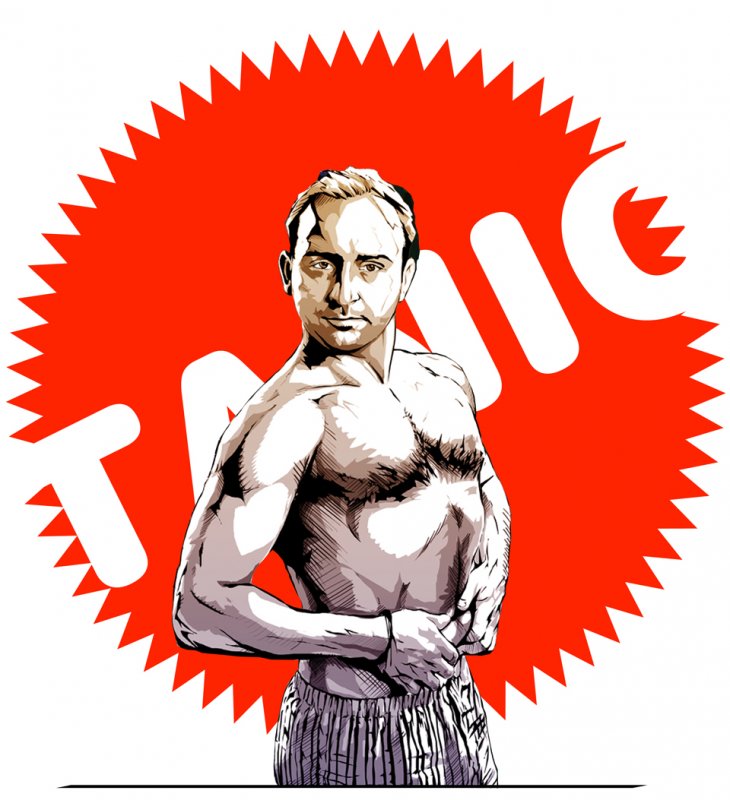
Maszynka do podświetlania
Maszynka do podświetlania
Kiedy byłem chłopcem troche wstydziłem się dziewczyn. Nie jakoś bardzo, krajowa średnia, ale istniała pewna dysproporcja między moimi potrzebami, a zdolnościami społecznymi. A że od dziecka jedną z moich obsesji było optymalizowanie wszystkiego dookoła, postanowiłem usprawnić proces poznawania fajnych koleżanek. Pamiętajmy że mówimy o czasach kiedy spontaniczne i zagadanie "co tam" było rzadkie jak magnetofon z funkcją auto-rewers.
Tak więc, wymarzyłem sobie osobistą maszynkę podobną do kalkulatora która wskazywałaby dziewczyny z gwarantowanym sukcesem w konwersacji. Taki wynalazek w hierarchii przedmiotów marzeń leżał na półce obok czapki niewidki i maszyny do cofania popełnionych błędów. Maszynka była bezprzewodowo połączona z mózgiem, wiedziała co i jak, a w przypadku zbliżenia do właściwej dziewczyny mrugała czeroną lampką. Podchodzisz, zagadujesz cokolwiek co przychodzi do głowy i bingo.
Po co ten wstęp? Bo tak się składa że ktoś właśnie zaprojektował moją maszynkę. Highlight to aplikacja na iPhona która wskazuje nam te osoby znajdujące się w pobliżu, z którymi mamy "coś wspólnego". Bazując na informacjach z Facebooka możemy szybko poznać naszych wspólnych znajomych i dzielone zainteresowania, odtworzyć historię "spotkań" które przegapiliśmy i na spokojnie przejrzeć ile potencjalnych znajomych ostatnio nas minęło. Najciekawszych z nich można oznaczyć tytułowym podświetleniem. Na ich podstawie aplikacja jeszcze precyzyjniej sprofiluje swoje poszukiwania.
Bazując na informacjach z Facebooka możemy szybko poznać naszych wspólnych znajomych i dzielone zainteresowania, odtworzyć historię "spotkań" które przegapiliśmy i na spokojnie przejrzeć ile potencjalnych znajomych ostatnio nas minęło. Najciekawszych z nich można oznaczyć tytułowym podświetleniem. Na ich podstawie aplikacja jeszcze precyzyjniej sprofiluje swoje poszukiwania.
Highlight od 1 marca dostepna jest na całym swiecie poprez AppStore. Swoją oficjalną premierę miała na SXSW, który był dla niej naturalnym poligonem doświadczalnym. Świadkowie mówią że jest super. I tak pomimo posiadania żony, dziecka, kota i kredytu we frankach zaistalowałem sobie Highlight. I mam już nawet jednego highlightowego znajomego. Ale nie powiem kogo, bo to facet.


Flicks. (End of March)
flicks.flicks.flicks
It's that time again for me to clean out my computer and share some mo' flicks with cha'. Enjoy zombies.











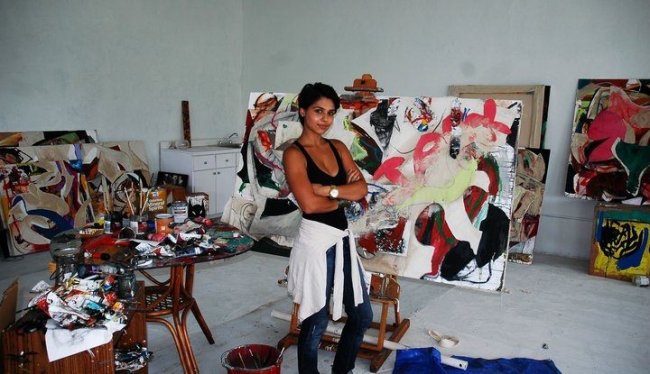









Posting shit for your enjoyment circa 2011.
Alligators Breathe like Birds! Cool!
University of Utah scientists discovered that air flows in one direction as it loops through the lungs of alligators, just as it does in birds. The study suggests this breathing method may have helped the dinosaurs’ ancestors dominate Earth after the planet’s worst mass extinction 251 million years ago. Via: Science Daily

Study Find
Image: Tammy Karr
Civil War Artist - A.R. Waud
Alfred Rudolph Waud emigrated to the United States from England as an illustrator in 1850. Waud was one of a number of sketch artists working during the Civil War, providing depictions of battles and scenes that photographic equipment was still too new to capture.

Waud was with the Army of the Potomac for the duration of the Battle of Gettysburg, and a number of his sketches survive. Most of a sketch artist’s work would not make it to publication. The sketch usually provided the basis for a more elaborate engraving that would appear in print. Waud’s “Death of Reynolds” sketch is depicted here, with Reynold’s falling backwards off his horse, hat coming off his head. Keep reading article
Could You Sketch During A War?
A.R. Waud Did!

Via: Gettysburg Daily
All This BS...


Bart Simpson Fashion World
Bart Threads.

Everything seems to look a little better when you add The Simpsons somewhere. Found this fabulous picture over at the New York blog - Art from Behind. Kathy Grayson runs the art world/life based blog and she is founder of The Hole gallery.
goddesque
Magic Waxx (tin) - £9.00
As it says on the tin. A magic waxx for YOUR pleasure! Take one soy wax candle & throw in some cocoa and shea butter, for nourishing your skin, some peppermint oil for tickling your senses and some toffee flavoured oil (just incase..) and you have a massage candle for one! Light the wick and allow the waxx to melt into a soft warm pool. After 20 mins blow the wick out and then scoop out the warm waxx, to use as a body and face treatment, just like 5 star spas and resort treatments!
Post title...
Check out the new album by

